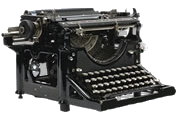Wide-Eyed and Fresh Off the Boat (Outing Magazine, 1917)
Some observations of the earliest Doughboy experiences were recorded in a letter home by this anonymous A.E.F. lieutenant during the Summer of 1917. He was unusually interested in the French architecture and rustic culture that surrounded him but also noted the deeply depressed German P.O.W. laborers, his food and the different treatment between officers and men.
Wide-Eyed and Fresh Off the Boat (Outing Magazine, 1917) Read More »
